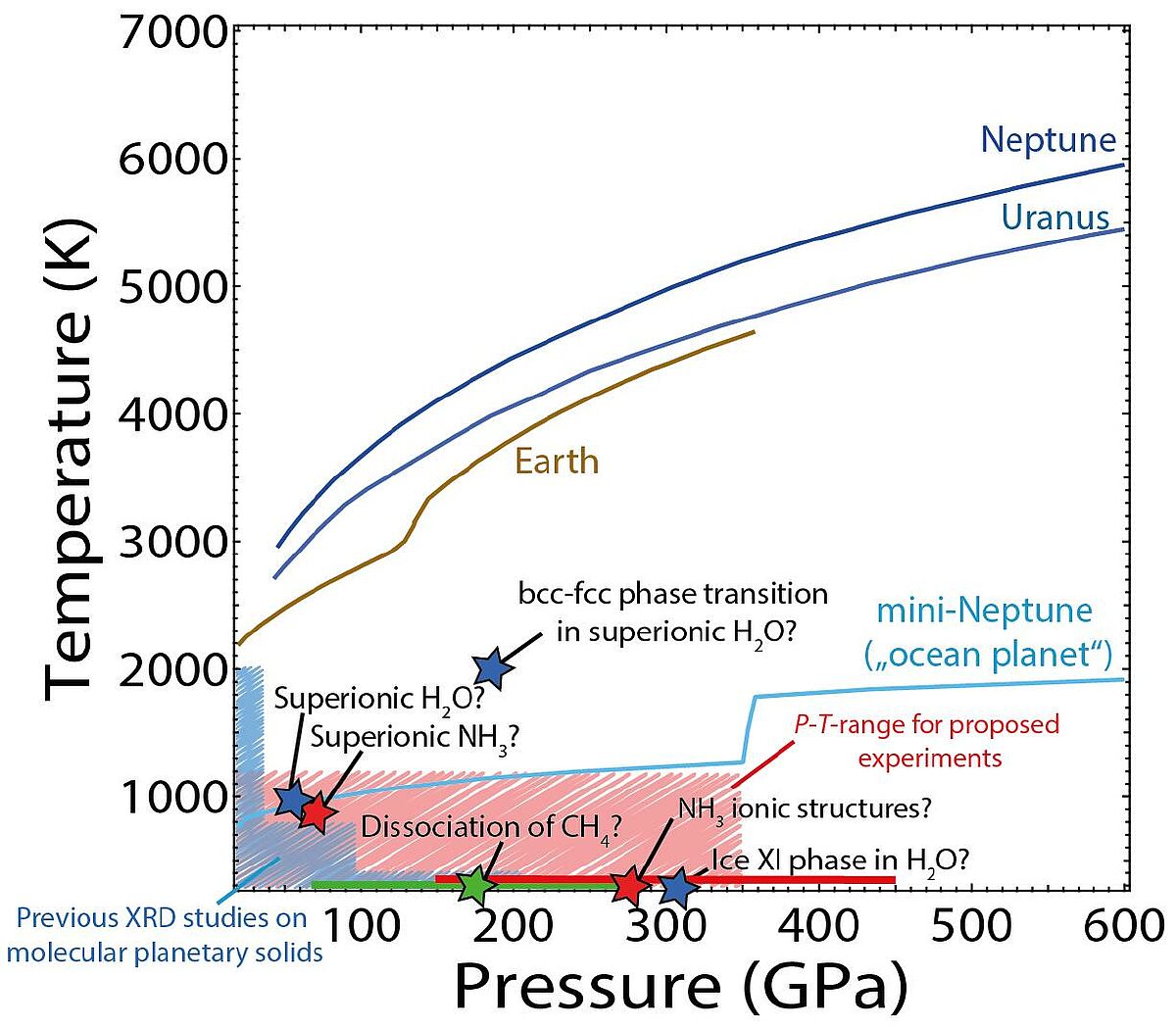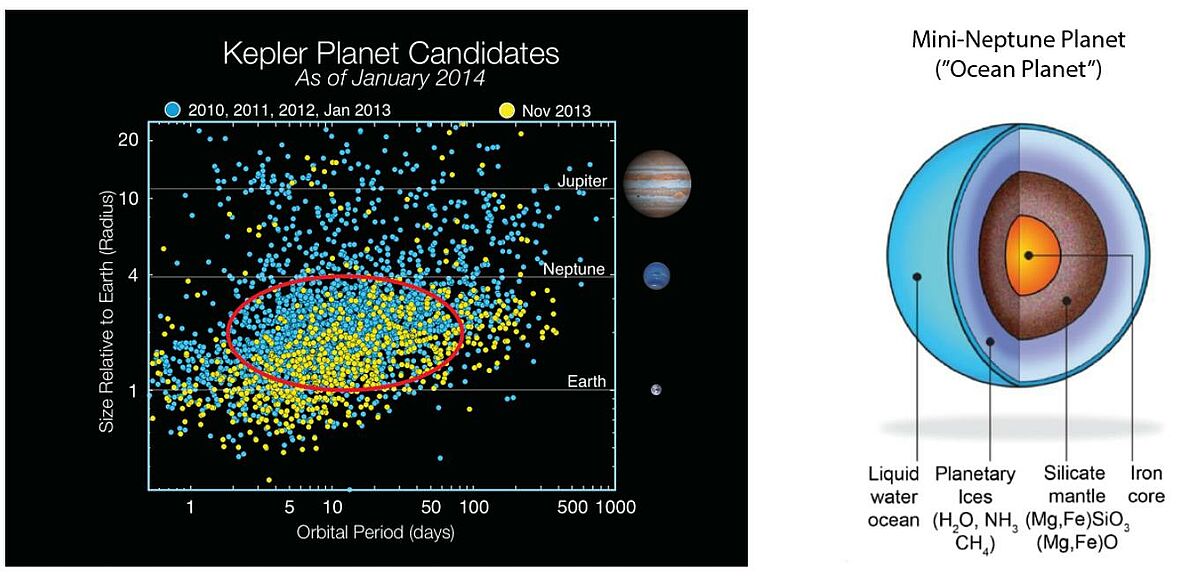Subproject 9: Experimental study of planetary ices at high pressure using dynamically-driven diamond anvil cells
PI: H. Carmen Sanchez-Valle, Co-PI: H.-P. Liermann, PhD: A. Mondal
Planetary ice compounds (e.g. H2O, CH4, NH3) constitute large parts of solar giant ice planets and are likely abundant in the interiors of recently discovered mini-Neptune exoplanets. Yet, their physical properties are poorly understood at relevant conditions (>100 GPa and 2000 K). Previous X-ray diffraction studies in diamond anvil cells (DAC) have been limited by the small scattering efficiency of these low-Z compounds and their reactivity with the diamond anvils. These shortcomings can be avoided by compressing the sample on short time scales (miliseconds to seconds) using dynamically-driven DACs. In subproject SP9, we will take advantage of new capabilities for fast compression studies of ice phases in DACs coupled with time-resolved X-ray diffraction diagnostics implemented at PETRA III and the European XFEL during FOR2440/1, to investigate the behavior of ices in the H2O-NH3 system. We will specifically determine the stability, structure and equations of state of H2O, NH3 and H2O-NH3 ices up to 150GPa and 5000 K. Initial experiments will be performed at PETRA III employing resistive heated dynamically-driven DACs commissioned during FOR2440/1. To reach the high temperature conditions of the superionic ice phases (>2000 K), we will combine conventional laser heating experiments at PETRA III with a novel approach for X-ray heating of the sample with consecutive EuXFEL pulses (coll. SP7). The experimental results will provide new anchor points to constrain computational predictions (coll. SP3) and serve as input parameters for large-scale numerical models to constrain the internal structure and dynamics of exoplanets (coll. SP5).


